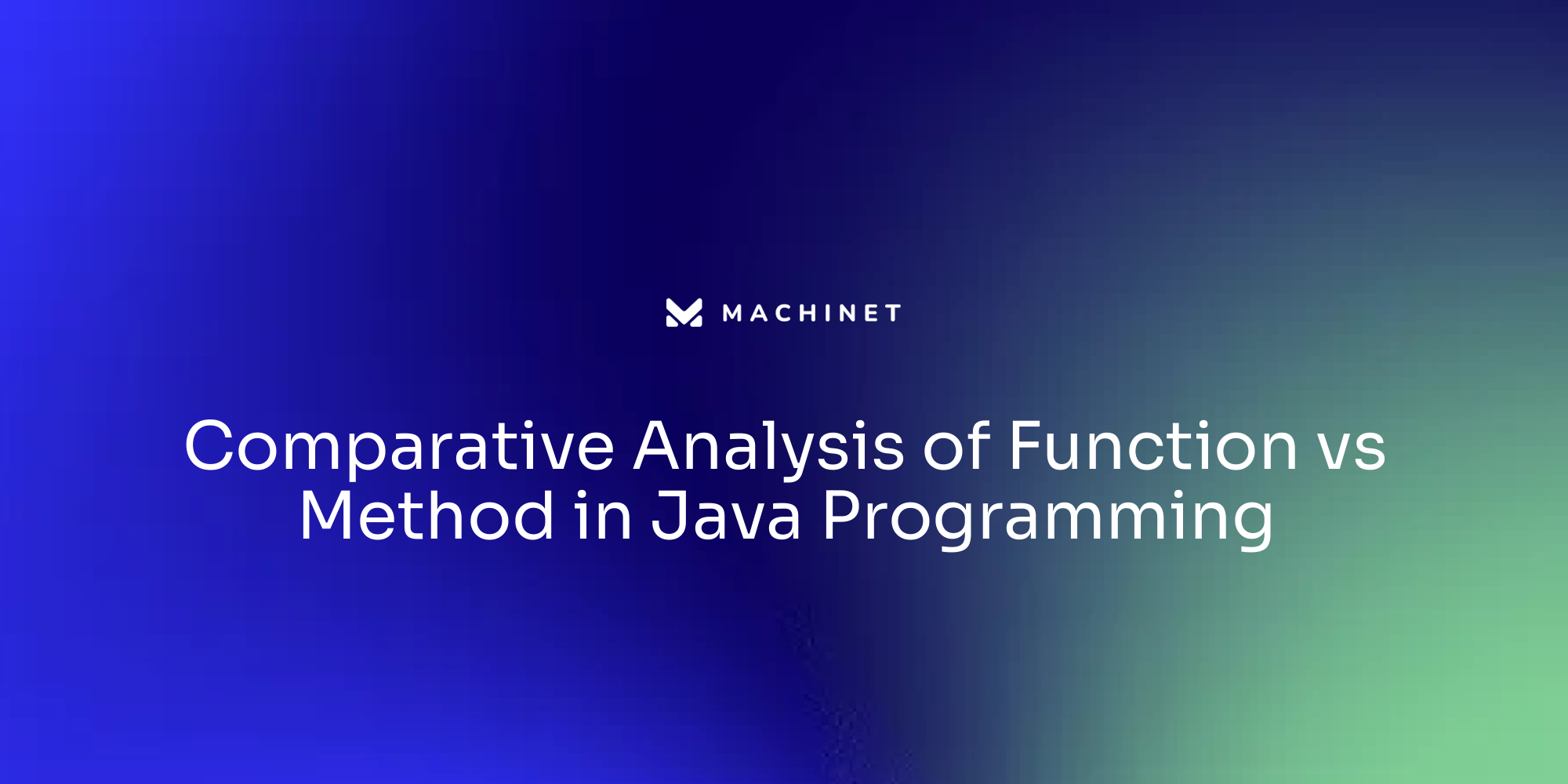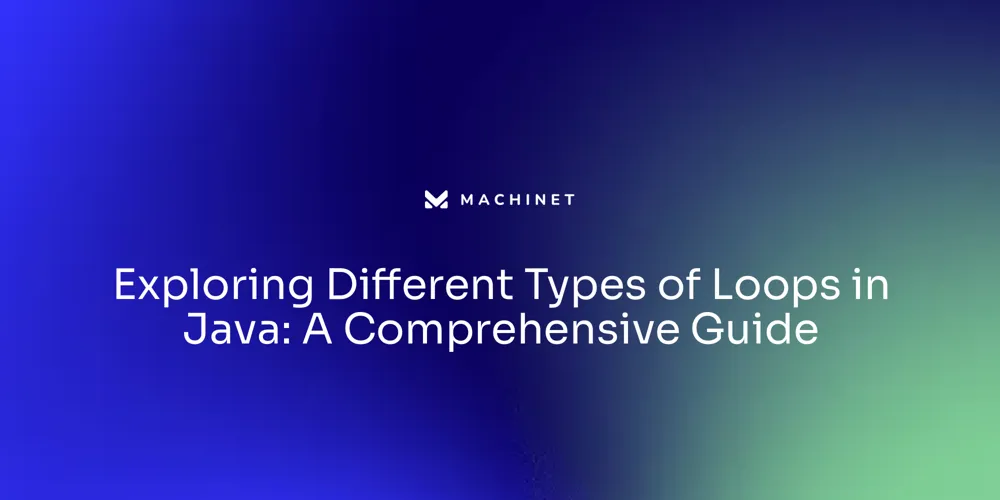
Introduction
In the realm of Java programming, distinguishing between functions and methods is essential for mastering the language. Functions are self-contained blocks of code that perform specific tasks and can be called independently. Conversely, methods are functions associated with objects or classes in the object-oriented programming (OOP) paradigm.
This distinction is vital in understanding how Java organizes code into objects that encapsulate both data and behavior.
The OOP paradigm simplifies software development by abstracting complex structures into manageable objects, similar to how a remote control operates various devices with a unified interface. This approach not only enhances code readability and maintainability but also aligns with principles like encapsulation, which restricts direct access to an object's data, ensuring consistency and reliability.
As developers delve deeper into Java, grasping the nuances between functions and methods will be pivotal in creating robust, scalable applications. This article explores these concepts, highlighting their roles, differences, and practical applications within Java, providing a comprehensive understanding for both novice and experienced programmers.
Terminology: Functions vs. Methods
In Java development, grasping the difference between functions and procedures is essential. A function is a self-contained block of code designed to perform a specific task and can be invoked independently. Conversely, a technique is fundamentally a procedure that is linked to an entity or category within the object-oriented development paradigm.
OOP is a coding framework that arranges code into entities, which are instances of types. These entities encapsulate information and processes, enabling them to operate as cohesive units. For example, think about a Person structure with attributes like name and age, and functions such as walk() and talk(). When a Person entity is formed from this design, it turns into an instance able to use these methods.
The concept of abstraction in OOP can be likened to using a remote control that operates various vehicles like a car, bike, or plane with the same set of buttons for actions like start, stop, and move. This simplifies interaction by concentrating on what an entity does rather than how it performs it. Abstraction is accomplished through abstract structures and interfaces, which conceal the underlying intricacy of entities, showing only their fundamental characteristics.
In the fast-paced world of software development, Bazlur Rahman, a seasoned Java developer, emphasizes the importance of clear and maintainable code. He notes that simplicity and readability should be prioritized over complexity, as clear code leads to software that is easier to debug, maintain, and extend.
As you explore further into Java, remember that functions are essential to the framework of types and instances, representing the actions that characterize the interaction within the system. By understanding and applying these concepts, developers can create robust and scalable Java applications.
Key Differences Between Functions and Methods
The main differences between functions and procedures lie in their context and usage. Functions are usually created independently of any structure, which makes them self-sufficient, while procedures are established within a structure and work on the information contained in that structure. This distinction is essential in object-oriented programming (OOP), where functions can access instance variables and other functions of the structure, adhering to the principle of encapsulation. 'Encapsulation restricts direct access to some parts of a component, enhancing the reliability of the software by hiding internal state and data.'. In practical terms, a method in a Java structure can manipulate the instance's private data, ensuring that all interactions with that data are tightly controlled and consistent.

Functions: Standalone Blocks of Code
Functions in Java serve as fundamental building blocks of code, designed for reuse and modularity. They can accept parameters and return values, which enhances their versatility and makes your code more organized. By incorporating functions, developers can decompose complex problems into smaller, more manageable tasks, thereby improving readability and maintainability of the code. This modular approach aligns with procedural coding principles, allowing for easier testing and debugging. As you navigate your projects, leveraging functions effectively will contribute to a more streamlined and efficient development process.
Methods: Blocks of Code Associated with Classes
Techniques in Java are essential to the object-oriented programming model, acting as the framework for defining behaviors and altering the state of entities created from templates. Java functions can be categorized into instance functions and static functions. Instance functions work on particular examples of a type, enabling interaction with the entity's distinct condition. Conversely, fixed functions are part of the type itself and can be called without generating an instance.
The application of instance functions supports polymorphism, allowing objects to be regarded as instances of their parent class rather than their actual class. This is crucial for writing flexible and maintainable code. Static functions, while useful, can present challenges in areas such as testing and scalability. As noted in various software development methodologies, avoiding static constructs can simplify dependency management and enhance test isolation. For example, projects that steer clear of static code often find it easier to replace dependencies within the dependency injection container, leading to a more adaptable and robust testing environment.
Java's evolution over nearly three decades highlights its adaptability, maintaining relevance through continuous enhancements. The language's core functionality remains intact while new features are grafted on to keep it modern. This balance ensures that both instance and static functions continue to play a pivotal role in Java's object-oriented structure.

Comparative Analysis: Procedural vs. Object-Oriented Programming
When comparing functions and methods, it's essential to recognize the broader coding paradigms they belong to. Functions are fundamental to procedural coding, which focuses on executing sequences of instructions. This paradigm dates back to the early days of coding when languages like Assembler were developed to simplify the manual writing of binary code. Alan Turing's work in the 1930s laid the foundation for these early languages, ultimately aiming to eliminate routine tasks for programmers.
On the other hand, methods are central to object-oriented design (OOP), which emphasizes the interaction between objects and the encapsulation of data and behavior. This approach signifies a substantial advancement from procedural methods, as it facilitates improved organization and management of intricate codebases. Today, OOP is the most common type of software development, with languages like Java, Python, and C++ providing robust support for this paradigm.
Understanding the distinction between these two paradigms is crucial for modern developers, as it influences code structure, readability, and maintainability. According to the Software Engineer Book of Knowledge (SWEBOK), software modeling in OOP creates abstract representations of key elements, facilitating critical decisions and effective communication among stakeholders. This evolution in coding practices continues to shape the way we develop software, making it more robust and adaptable to future challenges.

Practical Examples: Functions and Methods in Java
To illustrate the differences between functions and procedures, consider a practical scenario. Imagine you own a company that handles deliveries using bicycles. Initially, in a small town, bicycle deliveries are efficient due to shorter distances. However, as your company expands to larger cities, increased distances slow down deliveries. This prompts you to introduce motorcycles and cars for different types of deliveries.
Similarly, in Java, a function might be used to calculate the area of a circle by taking the radius as a parameter and returning the result. This is akin to using bicycles for short-distance deliveries. Conversely, a function could be part of a Circle class, calculating the area using the instance variable for the radius, akin to using motorcycles or cars for longer distances. These examples highlight how functions and methods serve distinct purposes within Java programming, much like choosing the appropriate delivery method based on the distance.

Conclusion
Understanding the distinctions between functions and methods in Java programming is crucial for effective software development. Functions serve as standalone blocks of code that can be invoked independently, promoting modularity and reusability. They allow developers to break down complex tasks into manageable units, enhancing code readability and maintainability.
In contrast, methods are inherently tied to classes and objects within the object-oriented programming paradigm, encapsulating behaviors that define how objects interact with their data.
The differences in context and usage between functions and methods are significant. Functions operate outside of classes, while methods are integral to the class structure, allowing for direct manipulation of instance variables and adherence to encapsulation principles. This encapsulation not only enhances software reliability by restricting access to internal states but also fosters better organization of code.
In practical terms, the choice between using functions or methods can impact the design and scalability of applications. Functions are ideal for procedural tasks, while methods provide a framework for object-oriented interactions. By mastering these concepts, developers can create more robust and adaptable applications, ultimately leading to more efficient software development processes.
Recognizing the roles that functions and methods play is essential for navigating the complexities of Java and modern programming practices.
AI agent for developers
Boost your productivity with Mate. Easily connect your project, generate code, and debug smarter - all powered by AI.
Do you want to solve problems like this faster? Download Mate for free now.




